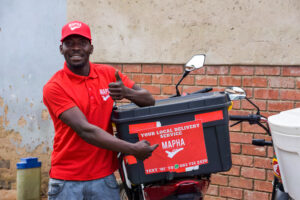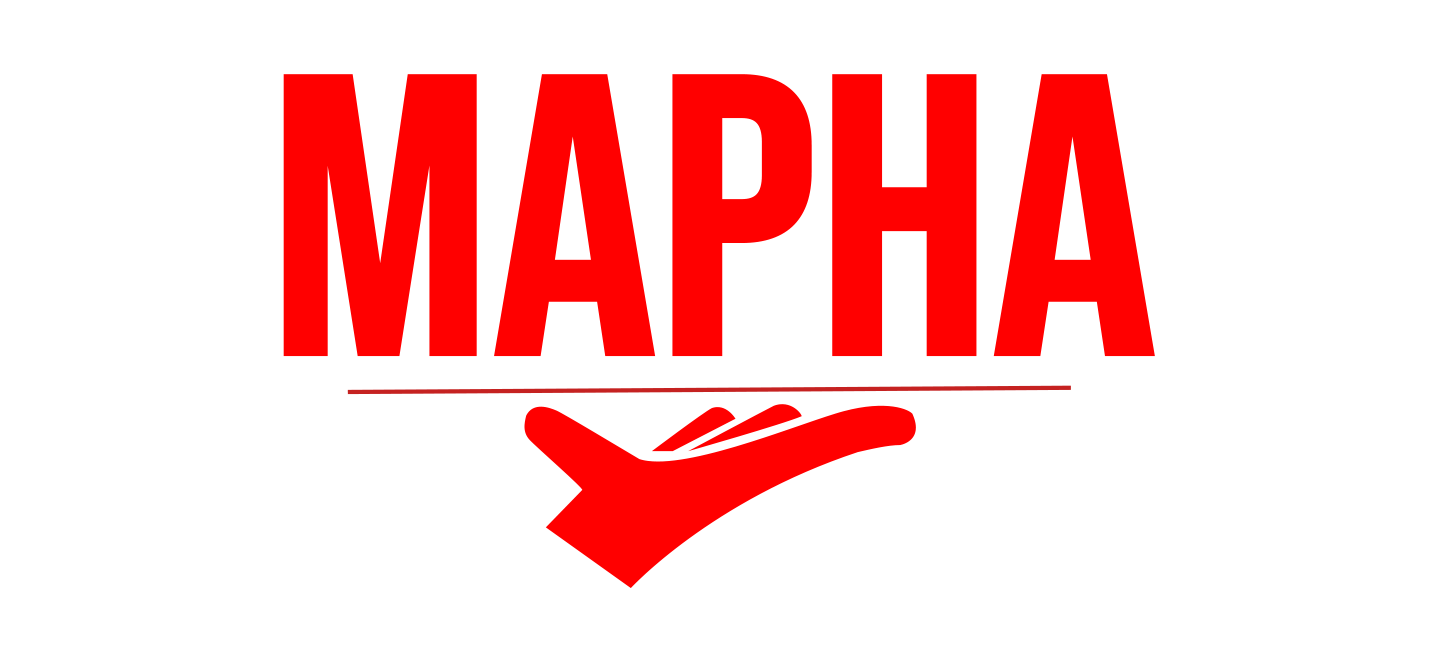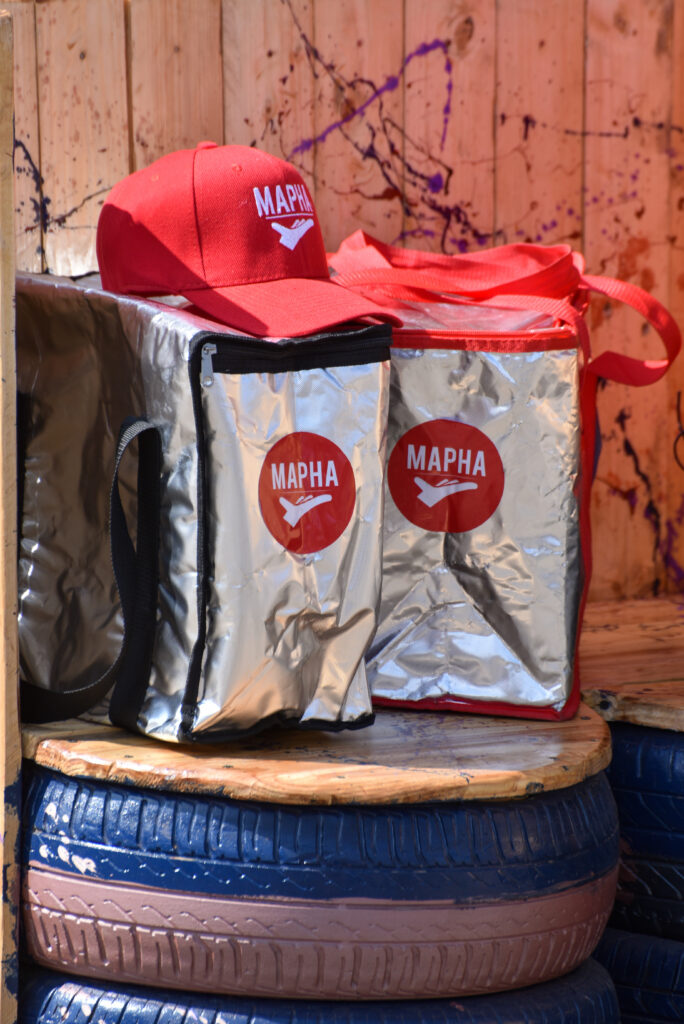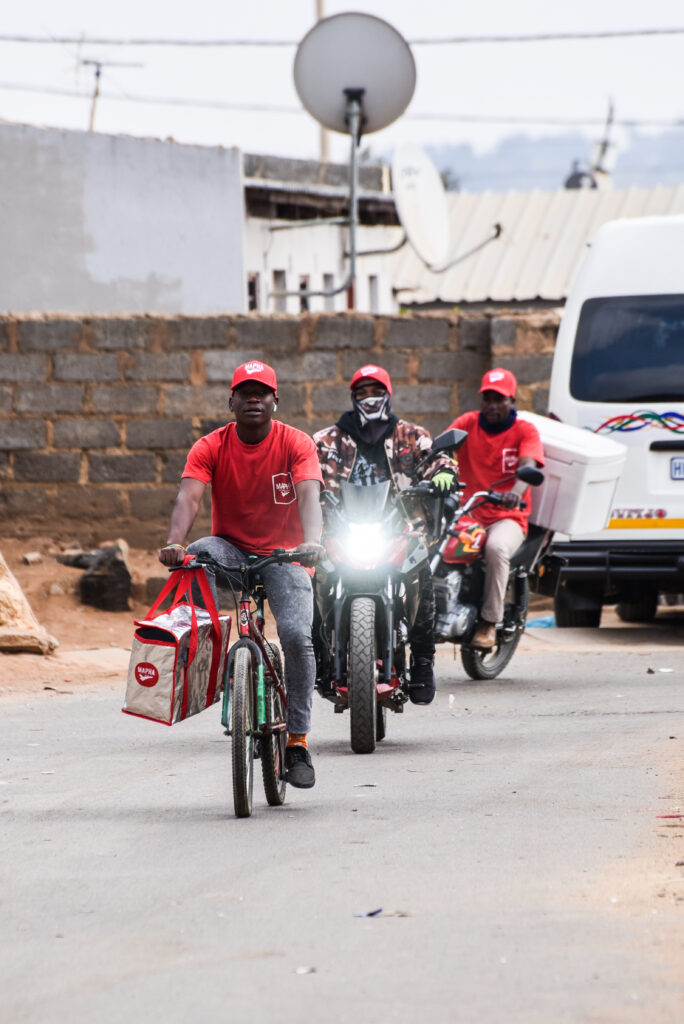Welcome to issue #3 of Mapha’s weekly blog. Every week we will be talking about the exciting world of technology startups, private equity and the global last-mile delivery space. Make sure to tune in so you don’t miss out on industry analysis from our international & in-house experts with over 85 years of experience in the technology startup & private equity industry.
Dark store-enabled, “ultrafast” delivery companies are getting funded and expanding across Europe, Asia, Russia, South America, and the United States. Their big brand promise is 10 to 15-minute delivery—or “faster than you can,” as the tag line for Gorillas goes—on grocery items.
With dark stores in densely populated urban areas on the back-end and armies of delivery people on bikes and scooters for the last mile, they’re betting that delivering items in just 15 minutes can be as powerful a wedge as Amazon’s promise of two-day shipping was in 2005.
The Darkstore Playbook
The strategy is largely out of the same playbook as other on-demand apps—capture customers, consolidate control over high-frequency behaviour, expand and cross-sell to other higher-margin categories. But their challenges are significant as well, from spoilage rates on groceries to hard-to-predict inventory requirements and building relationships with upstream suppliers.
Ultrafast delivery services operate out of 3,000~ square foot dark stores in urban core areas. That enables 10-15 minute delivery within their 0.87 km service radius and reduces supply chain costs and minimizes spoilage.
Fast facts about ultra-fast delivery
- Ultrafast delivery services are stores that cut the intermediary out of the distributor-warehouse-supermarket supply chain, receiving inventory and fulfilling orders out of the same place.
- Because the urban areas where ultrafast dark stores are located are dense, ultrafast services can make frequent deliveries or drops. At 6x drops/hr, Getir’s claimed drop rate is higher than our estimation of 2x/hr for Deliveroo, 4x/hr for Dominos and 5x/hr for Farmstead.
- The trade-off is the small selection of items: Jokr, which is based in Mexico City, Lima, São Paulo, and New York, carries about 1,500 SKUs in each one of its dark stores, and most ultrafast delivery services have a similar range around 1,000 to 2,000. That’s in contrast to the 30,000 SKUs that might be available at a supermarket.
The Vision
The ultrafast vision is to replace the local grocery store the way Uber disrupted car ownership. By turning groceries into something summoned at the touch of a button rather than something planned and scheduled, ultrafast services want to change how we shop entirely.
This is why there are two core levers for any online grocery business, including ultrafast delivery services:
- Growing AOV: By aggregating more demand and selling more SKUs, services increase the value of the average customer basket and get closer to a sustainable business.
- Improving gross margin: Through things like moving towards direct procurement, using data to reduce spoilage and optimizing product mix, services can cut down distribution costs and improve their economics.
The ultrafast delivery services take the opposite approach to that of traditional grocery stores. Instead of stocking themselves like a grocery store and then setting out to find customers, they stock a 3,000-square-foot dark store with a few thousand SKUs and aim to generate demand via hyperlocal advertising, digital marketing, and a novel value proposition: necessities and groceries delivered in 10 minutes.
Ultrafast services promise something like the magic moment that put Uber on the map. With Gorillas or Getir or Flink, you don’t have to think about what you may eat in the days ahead, what you need to buy, or find a time that you’ll be home to receive your order. There are no substitution requests. Instead, you get home from work, think about what you might want and tap some buttons in an app. 10-15 minutes later, groceries that you could never have previously acquired in 10-15 minutes arrive on your doorstep.
Benefits?
This Uber-like, touch-button service also removes a cognitive barrier to delivery, helps eliminate the problem of abandoned carts, and enables usage on the order of 1-2x per day rather than 1-2x per month as you might see with a traditional same or next-day online grocery service. The real upside is not just fast delivery but how fast delivery streamlines the process of eating. You no longer have to schedule when you can make it to the store to do your bulk buy, manage your fridge’s inventory of produce and fruits so that things don’t go bad and rot, or make a plan of all the ingredients you need to buy for all the recipes you plan to make.
If ultrafast services can drive demand and figure out the product mix, there’s a simple pathway to growth:
- Opening up more dark stores grows their geographical service area, increasing their density and volume of purchasing
- More volume means more SKUs and larger scale to directly procure items from suppliers, creating a better contribution margin
- Better contribution margin means services are more profitable, which enables them to grow and open up new stores faster
Geographic Analysis: African countries are among the fastest-growing markets globally

We hold an optimistic outlook for both the consumption and market size outlook for African countries. The short-term outlook remains robust across markets. Further, over the long run, driven by the attractive demographic profile in South Africa and an increasing number of middle-to-upper income households, cities in the South African online food delivery market will register a strong growth outlook throughout the upcoming years. Consumers are also quickly re-prioritizing their spending away from essentials, which will support the Online Food Delivery market growth in the African region.
The recovery from the pandemic is not uniquely spread across geographies and accordingly, most companies are opting for focused strategies to localized market conditions since the start of the pandemic. For instance, the majority of European consumers continue to emphasize seeking brands with strong purpose and good values while there has been a fundamental shift from essential goods in some African markets.

The future is bright & Mapha is perfectly positioned to capitalize on the rays of exponential growth beckoning on the horizon.
A productive week to you & yours
July 19, Chislehurston, Sandton, Johannesburg



